TEXT AND PHOTOGRAPHS BY DEEPSHIKA PASPUNURI
Hyderabad, Telangana, India
“He was still in medical school when I married him,” my grandmother looks back at her 1966 photographs with a smile, “it was his final year before graduation”.
One year later, my newly-wed maternal grandparents would move into their first home — a low-rise flat in the Bapatla district of undivided Andhra Pradesh. Just seventeen then, my grandmother would soon discover my grandfather’s sentimental refusal to bin items, which turned their one-bedroom rental into a rubble of family letters, postcards, and tchotchkes. As days passed, my grandfather’s household treasures and his lively backstories became one of their many domestic pastimes. Her favourite, a jewel-coloured pachisi board sewn by his paternal grandmother, still survives today.
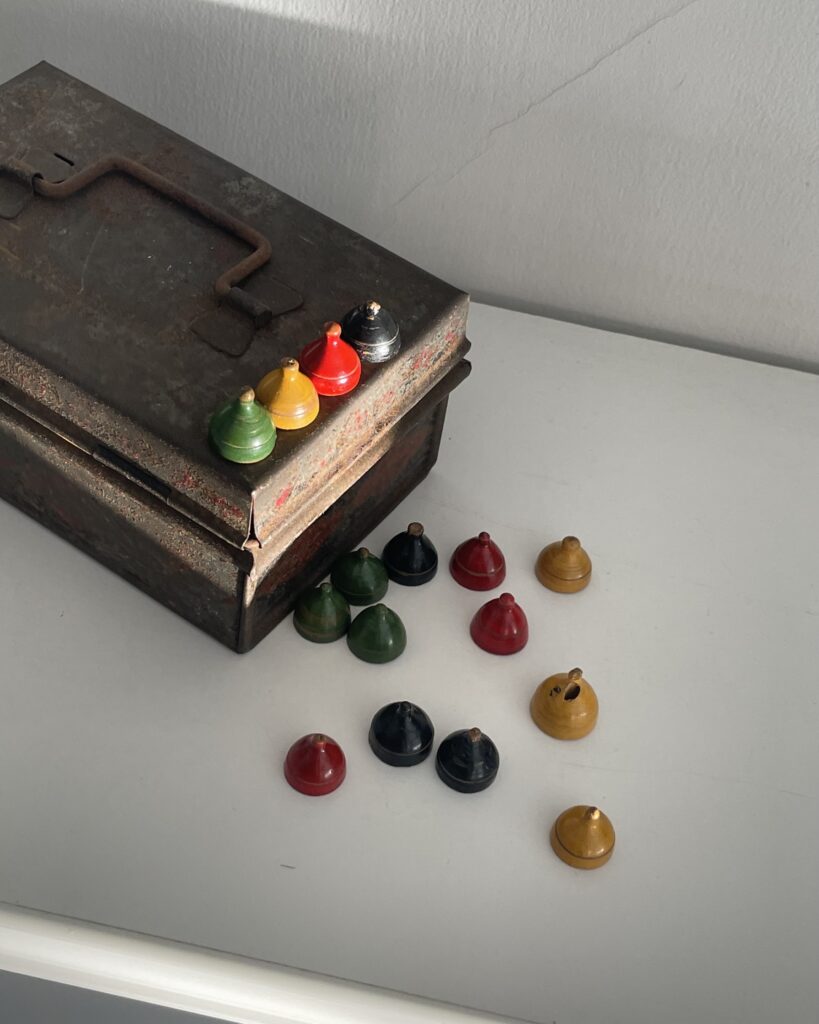
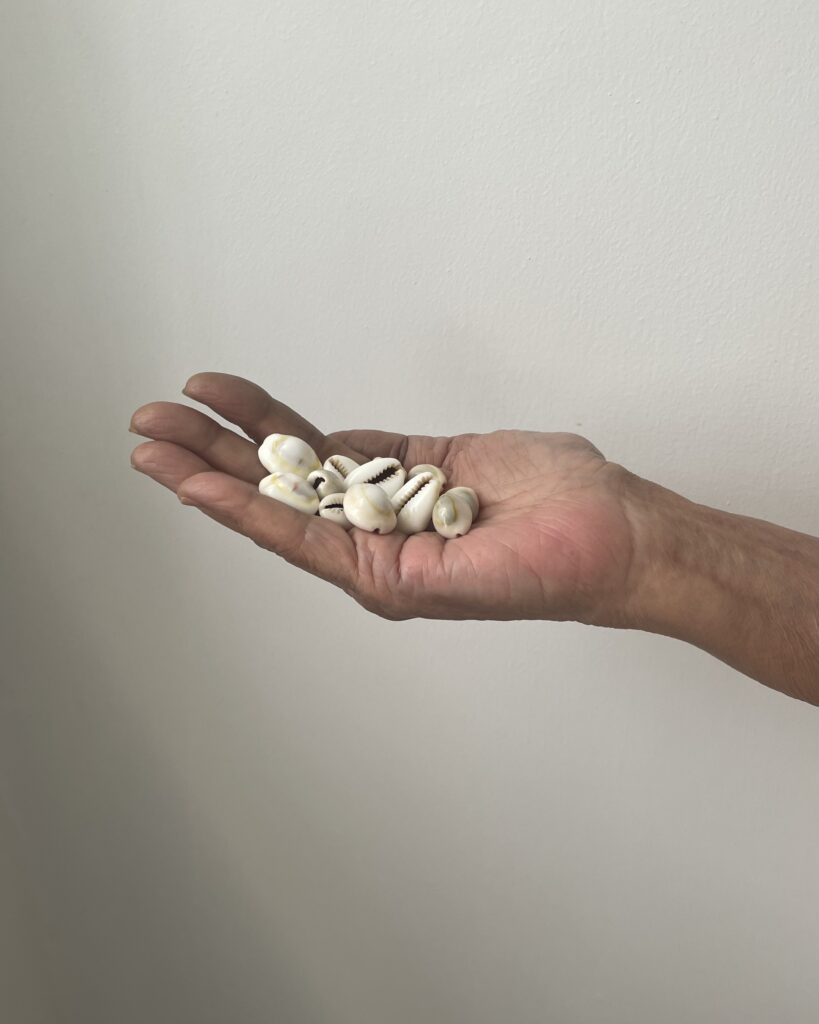
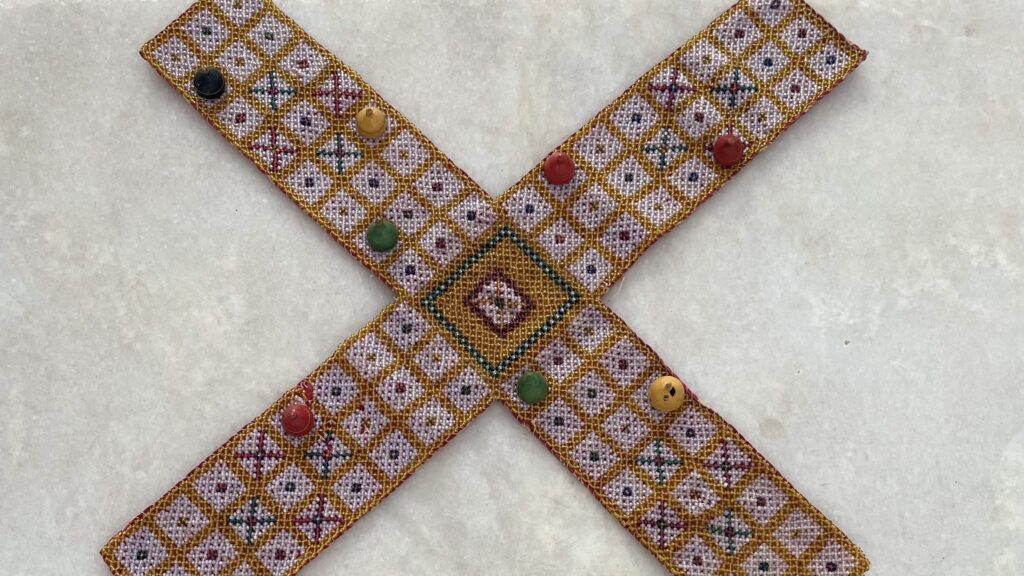
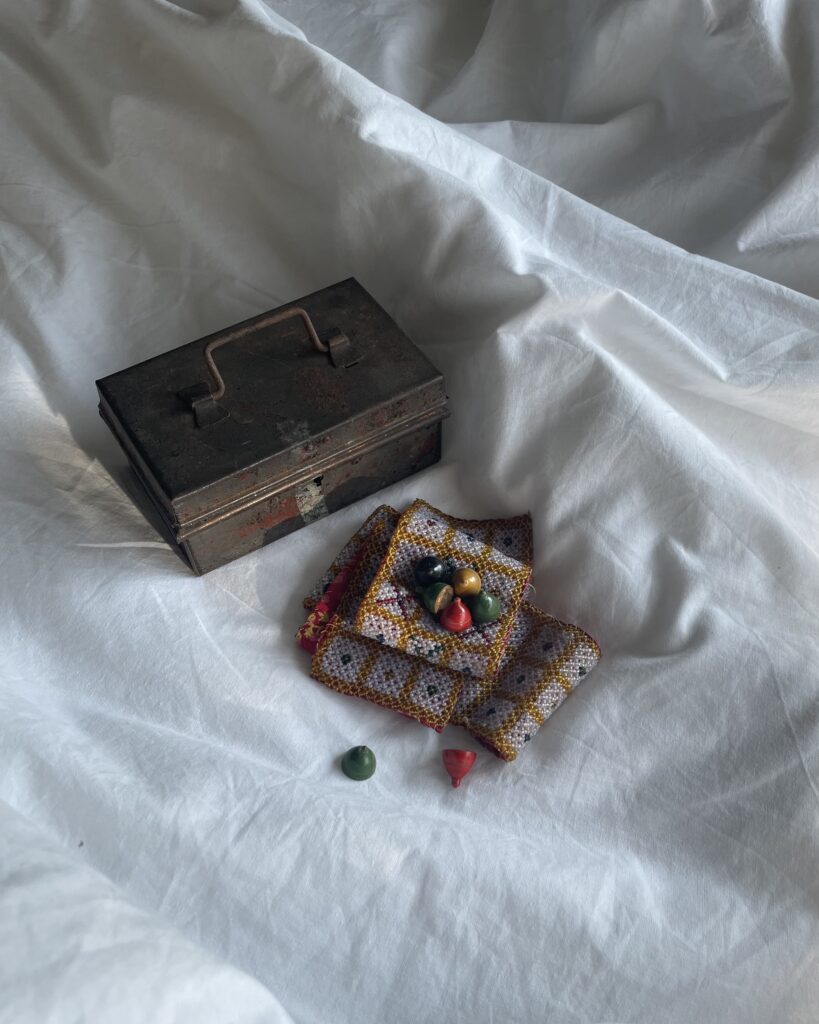
Throughout history, pachisi was the ‘poor man’s chaupar’. In 1891, an Englishman called Alfred Collier would even substitute its cowrie shells — the unofficial currency of lower classes — with a dice cup and patent it for the United Kingdom as ‘The Royal Ludo’. Centuries before this British rebrand, Mughal emperor Akbar also revamped the game into his own royal version, dressing the harem as player pawns and turning whole palaces into a life-sized chaupar game.
But to my grandmother, whose childhood pachisi grids were scribbled in chalk, my grandfather’s novelty board — like rubies, emeralds, sapphires, and pearls sewn together — seemed no less regal. “She embroidered each bead herself,” she tells me, looking back at the outbursts, meltdowns, and amusement this game brought to my grandparents’ living room 60 years ago. “I guess she’d be your great-great-grandmother”.
The same day, we looked through family albums, but it seems no photographs exist of her. Documents of her life haven’t survived either, except an off-handed guess of the decade she was born in — 1910s. A hundred years have passed since, and save my family’s accounts of her quick-paced stitches, this pachisi set is likely her only-surviving biography.
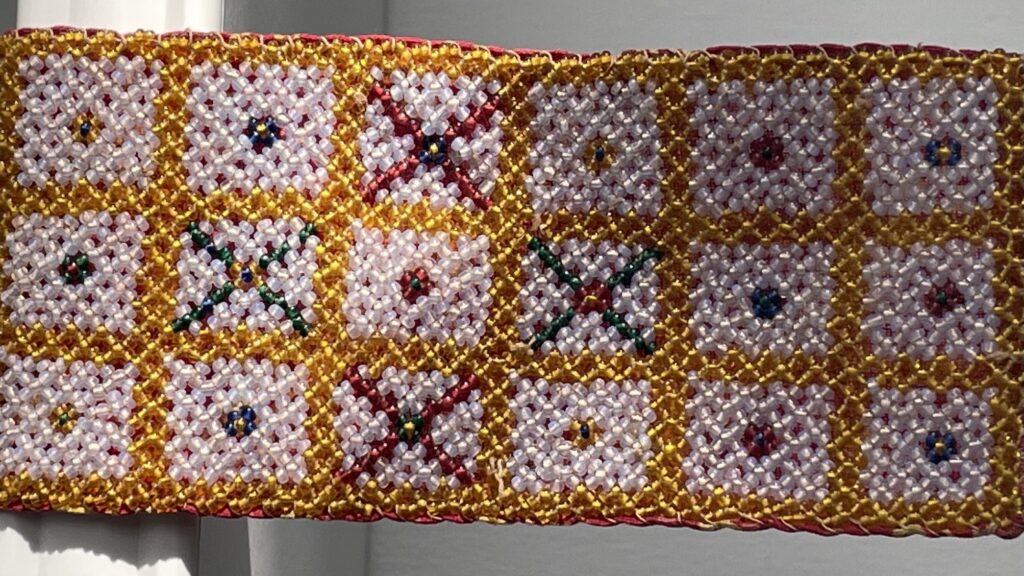
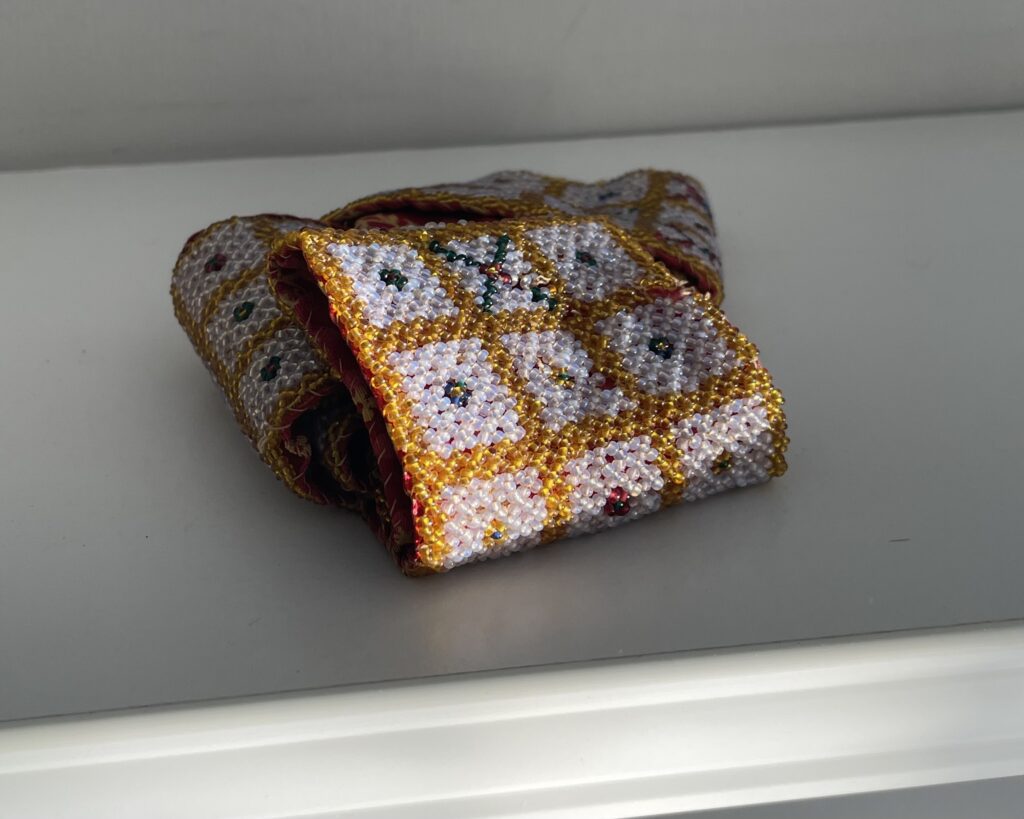
Going by my grandmother’s recollections, my great-great-grandmother made this foldable board sometime during the 1940s. Using a paper guide, the cross-shaped board was measured, cut, and stitched by hand. After this, she would have embellished the front (the playing side) with imitation jewel beads; thousands of them. It’s likely that her life’s work held many ambitious creations like this. But the cloth board she passed on to her grandson — complete with a sixteen-piece sepoy army and cowrie shells — is all that’s left today.
During her first decade of marriage, my grandmother tells me that many mornings were spent with their next-door tenants, who gave the pachisi board a new lease on life. Television sets had not yet arrived, she recalls, and tabletop games like this were still an intimate part of daily life. Any visitors — neighbours, housewives, in-laws, nieces and nephews — were also quickly turned into foes on my great-great grandmother’s board. “One of our relatives had such a brilliant throw,” she insists, “never played a bad roll, it was impossible to win against her!”
Over the next two decades, my grandad’s work in microbiology and his medical licence took the family — my grandmother and their three kids — across many small towns in South India. Everywhere they went, new pachisi rivalries were formed, rules were changed at whim, and sepoys mercilessly killed. Growing up, my mother recalls how they would take the pachisi board from my grandfather’s green-coloured almirah — the only place it was ever stored . “He was very careful with objects,” she tells me, “it’s why the set is so well-preserved even after all these years”.
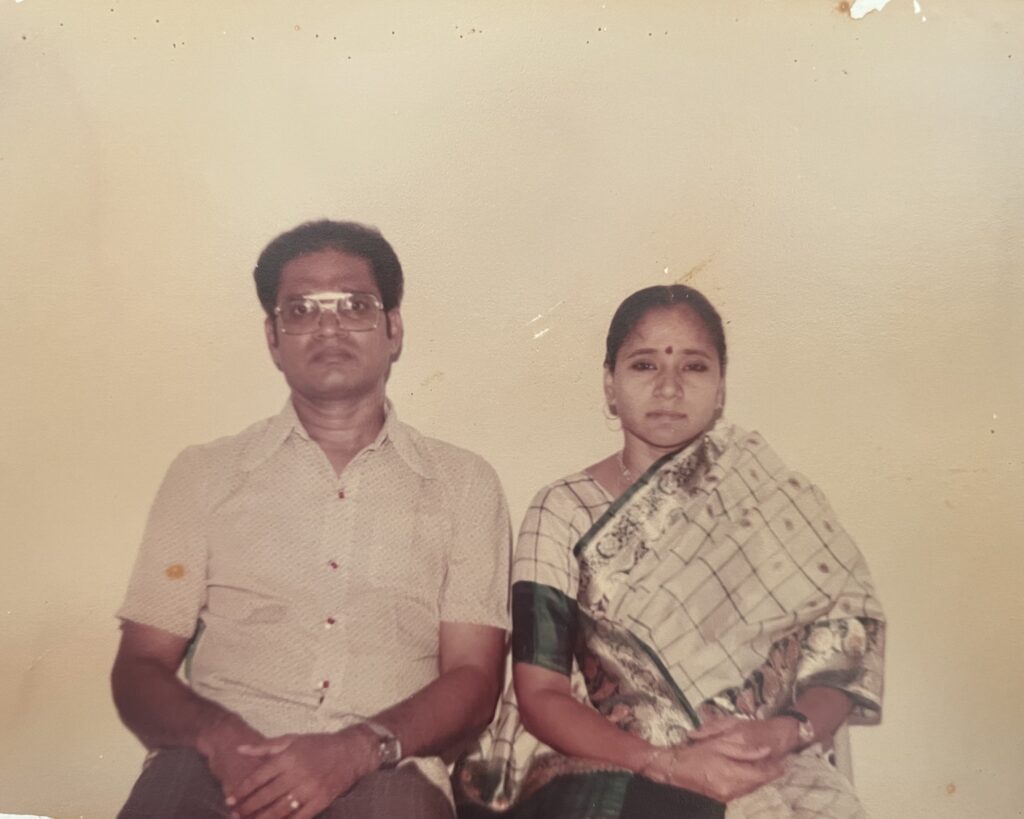
Later in his 40s, my grandfather was offered a promising doctor’s job in Saudi Arabia. But a few years following this, he was diagnosed with late-stage cancer and passed away shortly. Struck by grief, my grandmother confesses she was hardly aware of what was packed into briefcases at the time. Many things were likely left behind. But the cloth board persevered and made its way to their new address in Hyderabad.
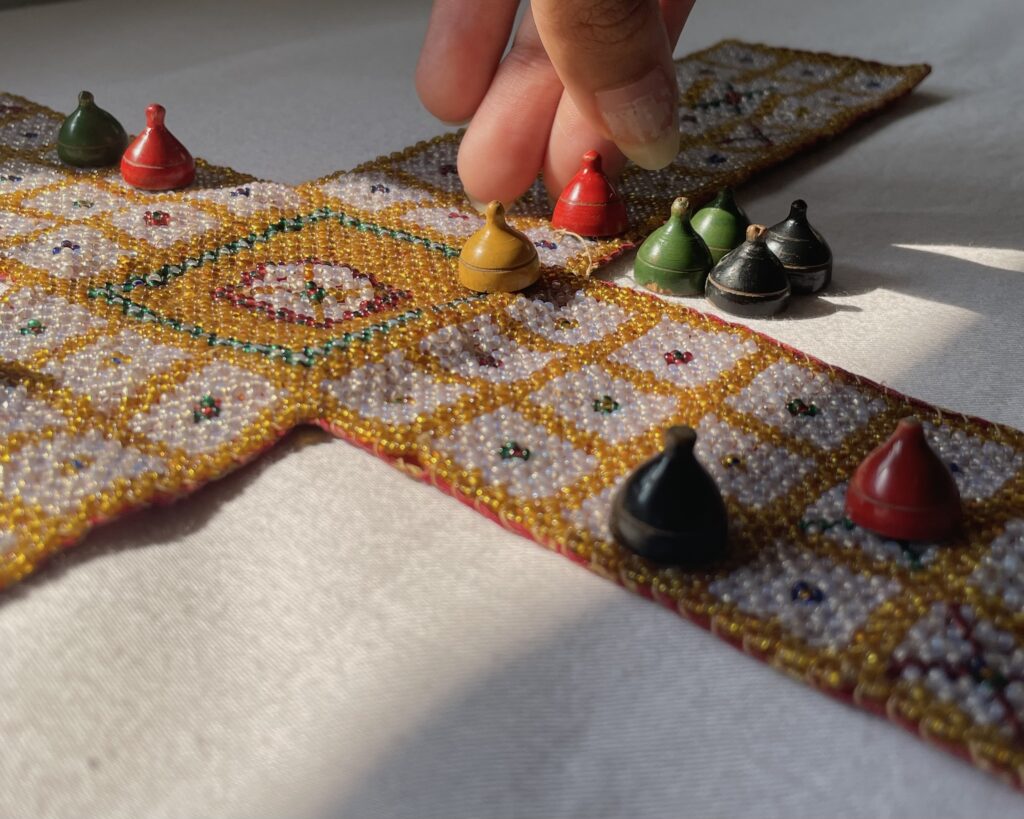
Around fifteen years after the tragedy, it would be unfurled again. By then, I was eleven years old. Despite imported ludo boards being all the rage, my summer evenings were spent around the pachisi board with my family, especially by my grandmother and me. Rules were changed by us too, taking as many as eight sepoys each. My troops were red and black, leaving her to assemble an army of yellow and green player pieces. Looking back today, my grandmother admits she, nor my grandfather, could’ve known that their tabletop game would be as delightful to us five generations after it was first made.
In the kitchen, fresh milk is waiting for her on the stove. I ask my grandmother if she’s heard of ludo before. She pauses to think it over. “No, I think we’ve always called it pachisi”.
